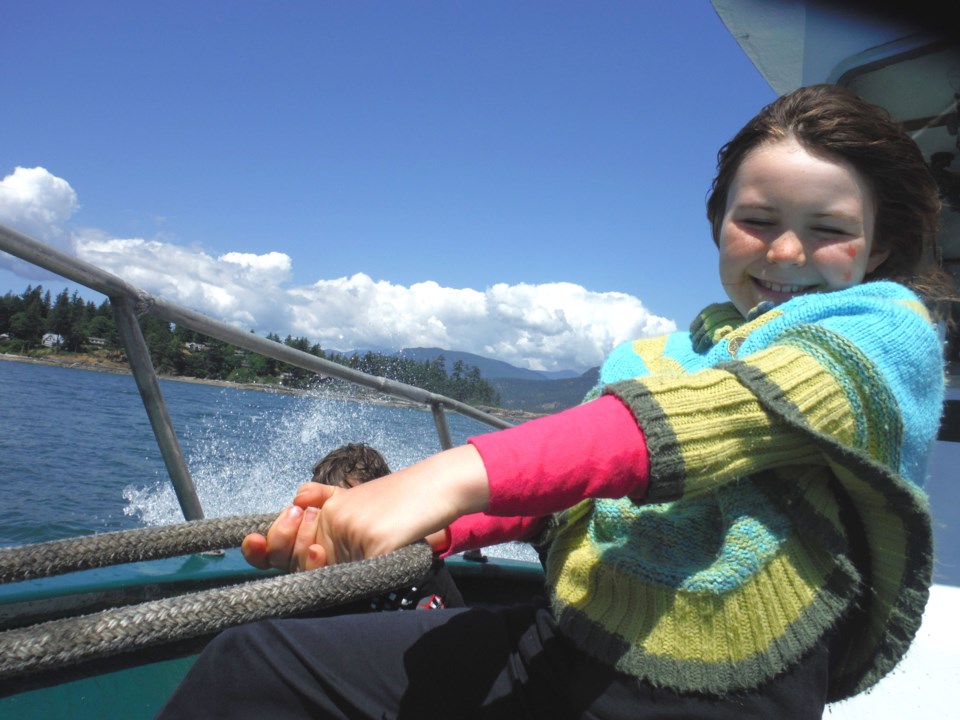Bubbles. Debris like snow hitting the glass, slowing and then rushing in like a blizzard until the camera hit the soft bottom. Then flashes of dark and light, and the squishy-looking ocean floor tumbled by. Four hundred feet down. We Nature Clubbers watched on the monitor of the drop video camera that Alejandro Frid brought with him to guide this tour.
We were all keen to see the mysterious and grand sponge bioherm he’d told us about, but meanwhile also ready to jump for every brief shrimp sighting. Skipper Eric went back and forth between Alejandro manning the cable, and the Apodaca’s cabin, trying to gauge the boat’s drift and get us closer to the bioherm. Alejandro explained sponges: in Howe Sound, colonies of live cloud sponges live on layers of dead sponges; this is called a bioherm, live structures covering hundreds of square metres and that have existed – in the same form that we see today – for more than 145 million years. Not only is the reef they build a rich and essential habitat for all sorts of marine life, but they also filter the ocean water at an astounding rate. They live in the deep water, because they like the cold. As the waters are warming, of course, the shallower sponges are beginning to die off.
We originally thought we might go to Pasley, but when the wind made that impossible, we tried looking for sponges just off Dorman Point. But the Round Bowen race was underway, and that was unsuitable, too. So off we went to find the bioherm near Halkett Bay on Gambier. And we didn’t really see that either.
The camera, with a small flashlight taped on, bobbed quickly along the seafloor. Among the little hillocks of soft ground we saw shrimp and spot prawns, anemones, urchins, tubeworms, a flounder, a green-striped rockfish, and tanner crabs. There were strong westerlies blowing and it proved impossible to tow the camera directly over the bioherm, even though it was very large. We saw some seals. And some of us got wonderfully and exceedingly soaked by the ocean spray. It was good to be out together, reminding ourselves of the greater ecosystem we’re a part of, the fragility and tenacity of it all, and the community we keep.
Alejandro Frid is one of Bowen’s celebrated marine biologists, and I am grateful for the work he does in protecting our coast, in researching its many inhabitants, and in sharing his knowledge and passion with the rest of us. Another celebrated Bowenite, Adam Taylor, will give us the gift of another beach interpretation day in the autumn. Yes, that’s the much-loved event where divers bring up samples of marine life for us to look at under the Mount Gardner dock.
But meanwhile, go out for a beach day! And while you’re resting, visiting, boating, swimming, or exploring the shore and intertidal life, look out at the water of Howe Sound and remember that there are giant sponge bioherms out there, keeping our sound healthy and clean.
And that is just awesome.



